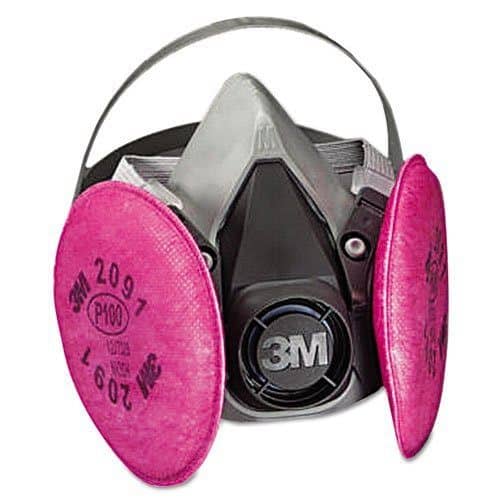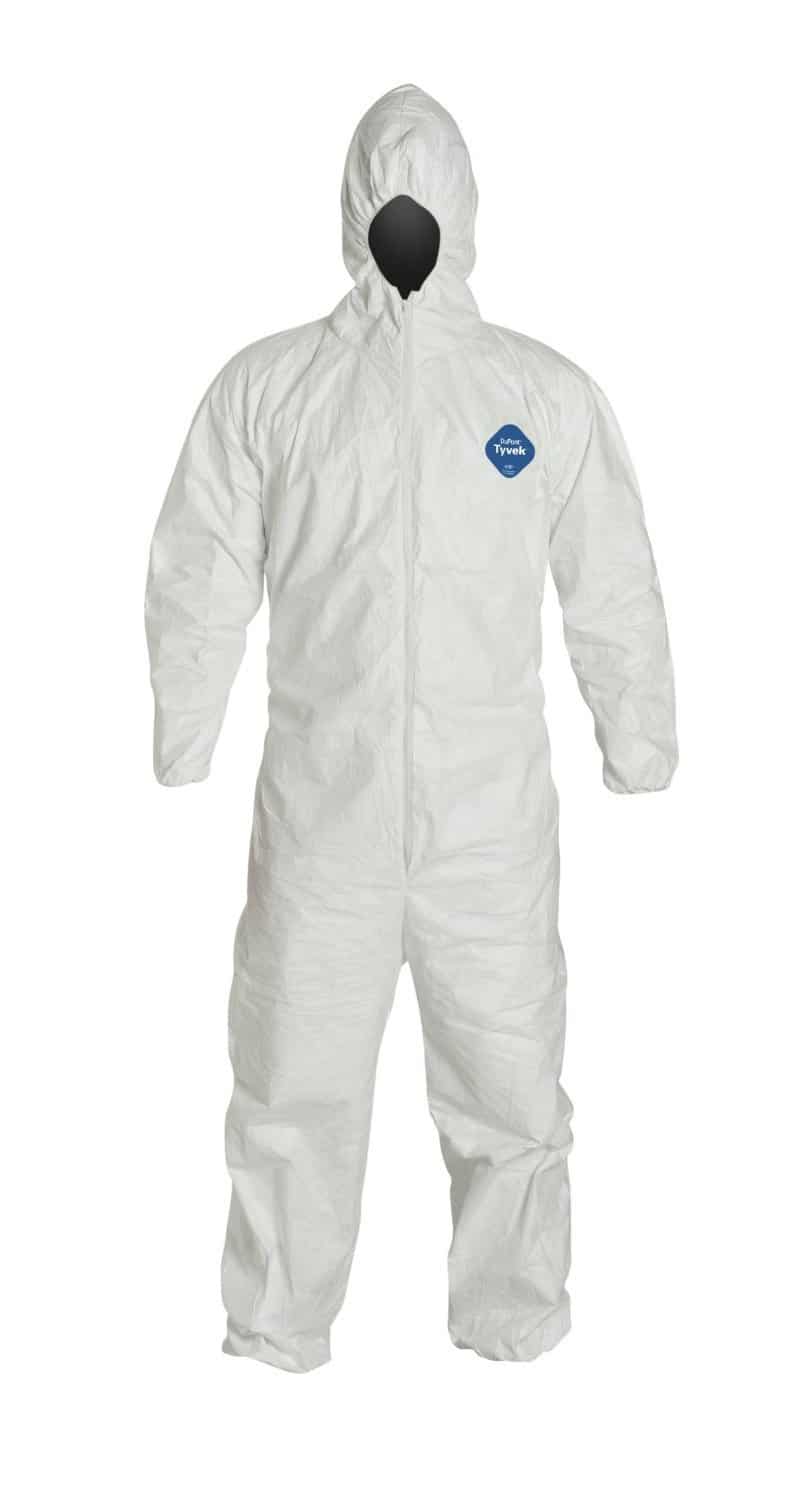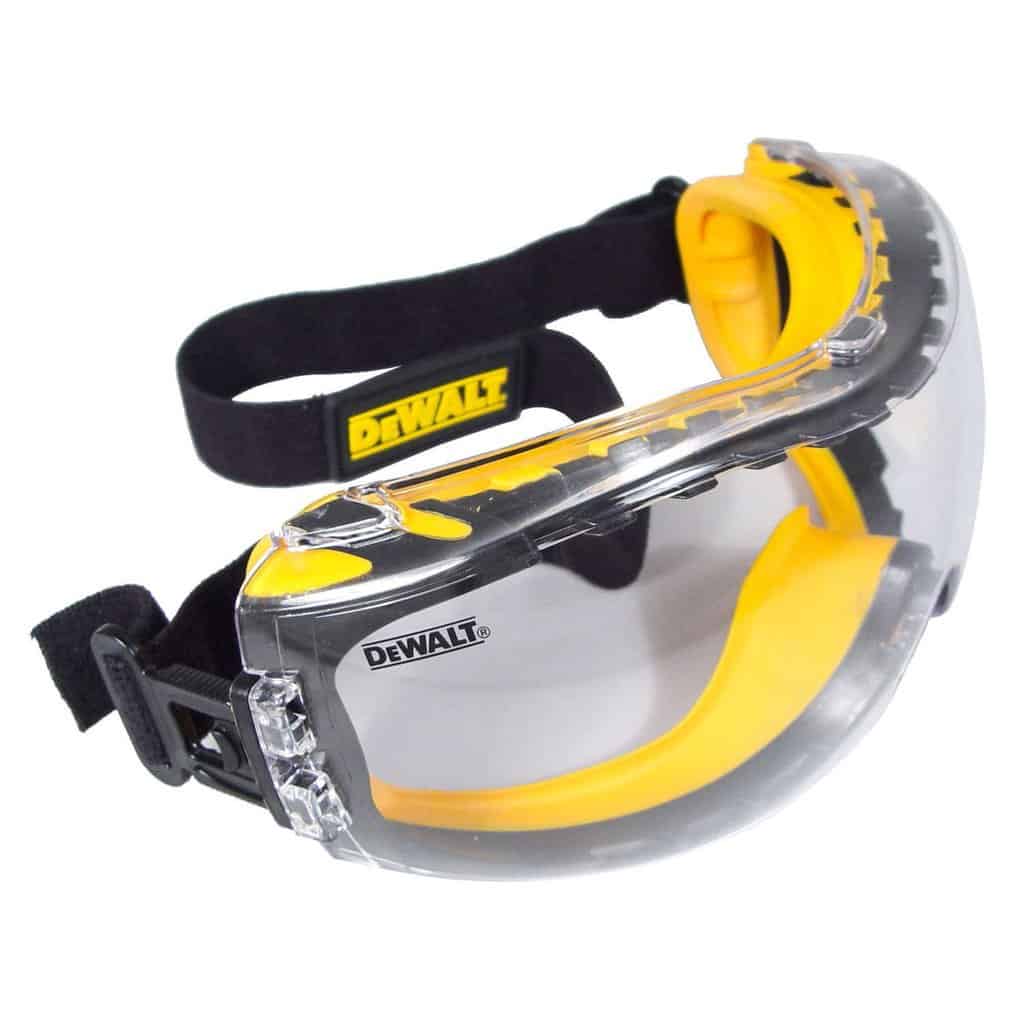Background and History of Asbestos Vinyl
Asbestos vinyl flooring was widely used until 1972. Vinyl is made from a combination of ethylene and chlorine that result into a plastic resin. Back then, asbestos was the additional component that improves its strength and insulating properties. Apart from vinyl flooring, asbestos was also used in wallpapers and ceiling tiles.
If the vinyl is intact, it doesn’t pose any threat. However, problems started to arise when floorings are cut, damaged, or get worn out through time. Back then, those most susceptible to having asbestos related diseases were vinyl factory workers, floor installers and construction workers.
Don't Guess - Test and Have Peace of Mind!

When the dangers of asbestos became an issue, then careful vinyl flooring asbestos removal became an issue. One option is just covering asbestos flooring with the new flooring material like carpet, vinyl tiles or sheet vinyl, laminate or hardwood flooring, or even ceramic tiles and stone.
Testing for asbestos in vinyl flooring can be done by professionals or by yourself to determine “is there asbestos in my vinyl flooring” or not. Asbestos in vinyl flooring isn’t the end of the world, but asbestos and vinyl flooring do cause concern for your health. Use precaution if you elect to remove asbestos vinyl flooring so that its potential doesn’t become your reality.
Until 1972, asbestos was used in a variety of building material such as roofing, exterior siding, window sills and linings, and vinyl flooring. Asbestos is a group of minerals known for their strength, flame/heat resistance, and indestructibility, and was considered ideal for insulation and fireproofing. However, once it was discovered that asbestos fibers can result in severe illness and disease when inhaled, the use of asbestos was banned by the EPA.
How to Check if There is Asbestos Flooring in Your Home.
Unless clearly marked on the product’s label, asbestos is impossible to identify without examining a sample under a microscope.
A. Size of Tile
One easy way for you to know if it is an asbestos vinyl is through the size of the tile. Before the 1990s, these tiles were manufactured in 3 sizes: 9 x 9 inches, 12 x 12 inches, and 18 x 18 inches. At present, standard square vinyl tiles are only 12 x 12 inches.
B. Brand of Tile
If you can still find out which brand of tiles was installed, here are some brands that manufactured asbestos flooring: Excelon, Fashionflor, Flor-Ever, Gold Seal, KenFlex, KenTile, Sears and Solarian.

C. Laboratory Testing
Testing for asbestos vinyl flooring can be done by a professional asbestos contractor or by using a do-it-yourself sampling kit.
- First, you would need to cut off a portion of your vinyl flooring as a sample. Spray water mixed with liquid detergent on the area where you're going to cut the sample from. The mist will ensure that asbestos fibers will not dissipate into the air.
- Using a utility knife, cut a small strip of the tile, around 1/8 x 1 inch in size. Cut all the way to the bottom so you can include the backing and the adhesive in the sample.
- Place the sample into the bag and ship it back to the testing laboratory.
- Wait for the result and if the sample consists of more than 1% asbestos, then it means your floor does contain asbestos.
Your Options: Removal or Installing a New Floor On Top
If your asbestos vinyl flooring is chipped, crumbling, or frayed, it must be removed before laying a new floor. The asbestos fibers from the damaged floor can cause health concerns when the fibers are released into the air. However, intact asbestos vinyl flooring should not be removed because the removal of an intact floor poses a greater risk than simply covering over the old flooring. Leaving the old floor as is will be the most safe action you could take because you’re not disturbing the asbestos in the material.
Considerations and Risks Before Removal
If you determine that the asbestos vinyl flooring must be removed, asbestos abatement contractors are highly recommended. Homeowners living in a single family home may also remove the asbestos but legally, family members and friends who help must do so voluntarily and without pay. Moreover, if you as a homeowner are not confident in your ability to safely remove the asbestos vinyl flooring, hire a certified asbestos abatement contractor. Asbestos removal is difficult work, and can be physically demanding and potentially dangerous to your health.

Asbestos fibers are up to 1,200 times finer than human hair and when inhaled, they can directly penetrate your lungs. Even after 3 decades of inhalation, asbestos can lead to lung cancer, mesothelioma, breathing problems and heart failure. Even the slightest exposure to asbestos can be risky, that is why medical experts emphasize taking precautionary measures when dealing with asbestos in home improvement projects.
Tools and Gears Needed for DIY Removal
If you’ve accepted the health dangers involved, you can minimize the risk of exposure to asbestos fibers for do-it-yourself removal by wearing safety equipment such as a respirator, coveralls, gloves, rubber boots and safety goggles. You need to fasten your gloves to the coveralls with tape, to make sure that they won't come off. Plus, tools such as spray bottles, liquid detergent, putty knifes, a utility knife, a still floor scraper, plastic sheeting, duct tape, plastic garbage bags, a mop, and disposable towels will be needed.
Check out this DIY video on how asbestos vinyl floor tiles are removed.
You can do better than the woman in the video by wearing the other required protective equipment. Note that breathing through a respirator can be challenging and the coveralls can be uncomfortable. Removing the tiles on your own will be time consuming. On average, a 2 square-meter area can take around 1 to 2 days. Do take careful consideration before embarking on a DIY floor removal project.
Steps in Removing Asbestos Flooring
Step 1: Protect The Area
The goal in removing the asbestos vinyl flooring is to remove it in whole pieces without causing any dust.
- Before beginning, the work area must be isolated using the plastic sheet over heat registers, doorways, cupboards, ect. and the heating and air conditions system must be turned off.
- All furniture and other moveable objects should be removed from the room to prevent contamination and to simplify clean-up.
- Access to the work area should be limited to one doorway, with a slit in the plastic door covering to make the entrance as small as possible.
- Post a sign outside the house or inform your friends and relatives that they cannot visit the house at this time.
- Keep the pets away from the work area as well.
- To further prevent asbestos fibers from spreading, the floor must be kept wet using a water bottle. The water will also help loosen the tiles and make removal mush easier.
- Keep your supplies ready near the doorway, which includes water bottles, rags, buckets and trash bags.
Step 2: Removal
- Once prepped and your safety gear on, cut the vinyl flooring into the manageable sections with a utility knife, and remove the pieces by pealing from the edges and using a flat scraper to lift the vinyl.
- Continue to wet the flooring as you scrape and pull to minimize dust. Any vinyl backing that separates from the vinyl flooring can be removed by thoroughly wetting and scrubbing the floor with a pad.

Step 3: Clean Up and Disposal
- As you remove the vinyl, place the pieces in sturdy plastic trash bags to avoid leakage and mark the bags "Danger! Asbestos-Containing Materials." Regulation also states that you should write your last name, address and removal date on the trash bag. The trash bags should be 33 x 50 inches in size and should be 6-mil thick polyethylene.
- The asbestos debris can only be disposed of in a landfill that accepts asbestos-containing waste. Consider calling the land-fill before you go to ensure you understand all their requirements.
- Careful clean-up is important when dealing with asbestos, and all potential asbestos dust and particulate must be removed from the work area to avoid future asbestos contamination.
- Wet and remove all debris left on the plastic sheet used to cover the counters, furniture, and equipment. Then roll them carefully and place them inside the trash bags.
- Twist the top of the bags and then seal them with duct tape.
- Wipe all surfaces and scraping tools with a damp cloth. Frequently rinse the cloth and change the water so that the surface in the work area can get truly clean. Once you're done with the rags, dispose them properly.
- Collect all your tools and put them in a bucket or plastic bag, so you can clean them later.
- Next, stand on a plastic sheet and spray yourself or your companion with water to wash down any remaining asbestos fibers. Only then will you be able to remove your respirator, gloves, boots, goggles and coveralls.
- Place your towels, mop heads, and coverall suit and gloves in the disposal bag. You can dispose of the boots or place in a plastic bag for cleaning later. Remove the filters in your respirator and dispose of them
- To ensure that your skin and hair is free of asbestos, immediately take a complete shower and wash carefully.
Don't Guess - Test and Have Peace of Mind!

When the dangers of asbestos became an issue, then careful vinyl flooring asbestos removal became an issue. One option is just covering asbestos flooring with the new flooring material like carpet, vinyl tiles or sheet vinyl, laminate or hardwood flooring, or even ceramic tiles and stone.
Testing for asbestos in vinyl flooring can be done by professionals or by yourself to determine “is there asbestos in my vinyl flooring” or not. Asbestos in vinyl flooring isn’t the end of the world, but asbestos and vinyl flooring do cause concern for your health. Use precaution if you elect to remove asbestos vinyl flooring so that its potential doesn’t become your reality.




We are renovating our home which was built in 1979.
I would like to remove the vinyl flooring in the kitchen to install a hardwood floor. I want to remove it so the flooring will flow evenly into the adjacent rooms (after carpet is removed). Do you think the kitchen flooring could have a possibility of asbestos if it were installed in 1979?
Chances are it doesn’t contain asbestos. If it eases your mind, you can always have it tested. ;~)
hi i am about to remove carpeting from the living room and getting tiles installed, the house was built in 1992 do you think the layer under the carpet may contain asbestos ?
Hi Irfan,
You shouldn’t have any asbestos since the house was built in 1992 – asbestos was banned 20 years before that. If it helps to ease your mind, you can always have it tested. ;~)
Dear Flooring lady
I am currently renting a townhouse, that was built in 1985. I have recently asked to get new lynol flooring in my bathroom and storage rooms. I was told they cannot give me this until they test for asbestos. ( they told me that the likeliness of this was rare but they should test). Do you think it could at all be possible for my townhome to have asbestos? also how long does it take to get the test back?
Hi Kayla,
It’s actually a good thing that the landlord/owner cares enough to test the flooring. Chances are, it won’t contain asbestos and he’s only wanting to cover his butt, but that’s a good thing for you too! Chances are slim that it would contain asbestos. As far as how long does it take to get the test results, well, it’s going to depend on the lab that’s doing the testing. Shouldn’t be more than a couple of weeks though.
My neighborhood was built around 1980. My neighbor said her original laminate floor was tested for asbestos and it was positive. We have the original laminate floor under a new laminate floor. Is it dangerous for the kids? She told me it wasn’t dangerous unless you were tearing it out. Thank you!
Dear flooring lady,
I sent you a message about my townhouse built in 1985 possibly containing asbestos in it.. My landlord did get it checked for asbestos and the results came back positive. In one of my storage closets the tile is tearing back and it looks like it has been cut, also I recently had the landlord come in to repair drywall in there ( due to a leak). The repair man took the baseboards off and he was sanding around in the closet . So my question is could the fibers have been released into my house? when they go to tear out the asbestos is it safe for my children and I to stay there? and lastly could the rubber base board contain asbestos in the glue?
Hi Jennifer,
So long as the original flooring is covered, it’s ok. The danger is when it isn’t covered or is being taken up, then tiny particles become airborn and can be inhaled.
Hi Kayla,
Geez……that’s so not good. You should not be there when it is being removed. I would talk to your landlord to see what he is willing to do about all this since your belongings shouldn’t be in there either (the asbestos particles can settle back down onto your furniture and such if the particles become airborn).
If your landlord intends to have the tiles removed while wet, that’s a different story, as wet removal keeps the asbestos from becoming airborn.
I wouldn’t have a clue about the baseboard or the adhesive containing asbestos – the only way to know would be to test it.
Hard to fathom how something built as late as 1985 had asbestos tiles installed. So glad your landlord cared enough to check into it!
Dear flooring lady,
My tiles do contain 30 to 40% asbestos in it.. The landlord now wants to cover over the exisiting floor with new stuff, instead of tearing out the asbestos containg flooring.. I am a little concerned about this, because the flooring is fraile and ripping back.If the flooring is fraile and torn back, could it release any fibers in the air??? I did also metion my townhouse was built in 1985 ( which i thought asbestos was baned than) As well who could i contact to get my quality of air tested in my home. I am from vancouver canada.I am extremely concerned for my childrens saftey as well as myself because my son just got diagnosed with active airway disease.
Hi Kayla,
Gee, that is not what I wanted to hear. I don’t know when Canada banned the use of asbestos, in the US it was in 1972. In the US we have the EPA – Environmental Protection Agency. There are mandated rules and regulations for removing asbestos-containing material and it’s disposal. I would presume that Canada has a very similar department as well — they should be able to supply you with what the law is in Canada.
Yes, if the flooring is frail, crumbling and such, fibers could have been released into the air. I would urge to speak with your son’s pediatrician (or specialist if he has one) about your concerns as well.
I did find a link that might prove useful to start you on your path of arming yourself with information:
http://www.hc-sc.gc.ca/hl-vs/iyh-vsv/environ/asbestos-amiante-eng.php
See also: http://en.allexperts.com/q/Residential-Property-Management-2151/Asbestos-backing-lino-flooring.htm
In my opinion, it sounds like you may want to consult an attorney, though I’d suggest talking to a govermental agency or doing further research.
Dear Flooring Lady,
For do-it-yourself cleaning, after remove the vinyl material and wet scrubbing it off, how do we know the floor is really clean of asbesto? Can I see asbesto fibers on the floor with naked eyes?
Hi Laura,
You don’t know, Most of the time, you can’t see it with your naked eye. This is why it’s best to have a professional who is trained in asbestos removal handle a job that is this important. Hopefully too, you were aware that there are Federal and State Laws governing asbestos removal and didn’t just dispose of it along with your weekly trash.
My home was built in 1964. I have an old lineoleum floor on top of the original vinly square tiles which are glued down with some black stuff that looks like an asphalt glue which apparently may contain asbestos. I was planning to overlay with a laminate, but when the flooring company came out to complicate the issue my floor was not level. Now after going to the expense to have my foundation repaired and the house leveled, there may be an issue with the some of tiles which are now cracked and I’m in a fix as to how to remedy the uneven tiles so the laminate can be layed over them. One contractor said he could just sand the uneven spaces (sounds like creating potential asbestos dust everywhere). I’m in such a fix with the laminate already purchased and really don’t know exactly where to go next. I need direction as to who I can trust to help tell me how to safely remove the tiles/or how to make the floor smooth enough to go over with the laminate. I choose laminate since it supposedly floats, but how much floating can it actually do.
Hi Sandy,
By ‘floating’, it simply means that it can expand and contract naturally without worrying about it warping because the edges don’t touch the very edges of the walls. It doesn’t really float up and down, which is why you need to work with a level floor. I have no idea just how off level your present floor is, so I don’t really know what measures can be taken to smooth things out.
Sanding the tiles can be done so long as it’s a wet process and it’s cleaned up while wet. Old asbestos flooring is safe so long as it’s covered up completely. You might want to consider sealing it with an epoxy substance or sealer of some sort even before you put down the underlayment. The damaged tiles should be removed (also using a wet process) – you can then fill in the spots with a leveling agent of some sort.
I’m laying down some laminate flooring. the entry way has this stone colored vinyl. Before I got here I went ahead and pulled the vinyl up but parts of its backing, white or off white, stuck to the plywood floor sheathing. I used a hairdryer for a little bit and scraped some of it up. I gues I may have messed up big time huh? Is testing the sheet and backing the only way to know? The house was built in 1976 and is a modular home.
Richard
Hi Richard,
Gosh, let’s hope not. Yes, testing it is the only way to know for sure. I would think that modular home manufacturers used so much flooring product and were probably watched more closely in regards to using materials with asbestos, so I would tend to think that they would have been more diligent in making sure they didn’t use anything with asbestos containing materials. Better to have it tested than to always wonder & worry.
We have a beach house, built in 1956. It was evident the shower had been leaking for some years. I began pulling up the ugly (1970’ish) vinyl (soft pliable sheet flooring)in the bathroom expecting to find oak floor like the rest of the house. Underneath the decomposed particle board was what I would call hard sheet linoleum. I got a little ambitious and began removing the rest of the vinyl and particle board through the laundry room and into the kitchen. It occurred to me half way through that the vinyl flooring on top may have asbestos. Is there a way of determining this myself. The vinyl did not come up in sheets but tore easily, sometimes separating from the paper. I have not removed any of the materials from the house. They are in a pile on the remainder of the kitchen floor. I’m concerned now that the top layer vinyl may have asbestos. I would be certain that the bottom layer linoleum was original to the house. I was planing on painting the original with an epoxy floor paint. Do you have any suggestions? Can I take a sample to a lab to have it tested?
Hi Mike,
Yes, you can buy a kit to send a sample to a lab to determine if the flooring contains asbestos. You can find these at most hardware or big box home improvement stores.
Old asbestos flooring can that isn’t frayed, chipped or broken is considered ‘safe’ if you use an epoxy floor paint, sealer, or new vinyl, lino, tile flooring (etc) over it.